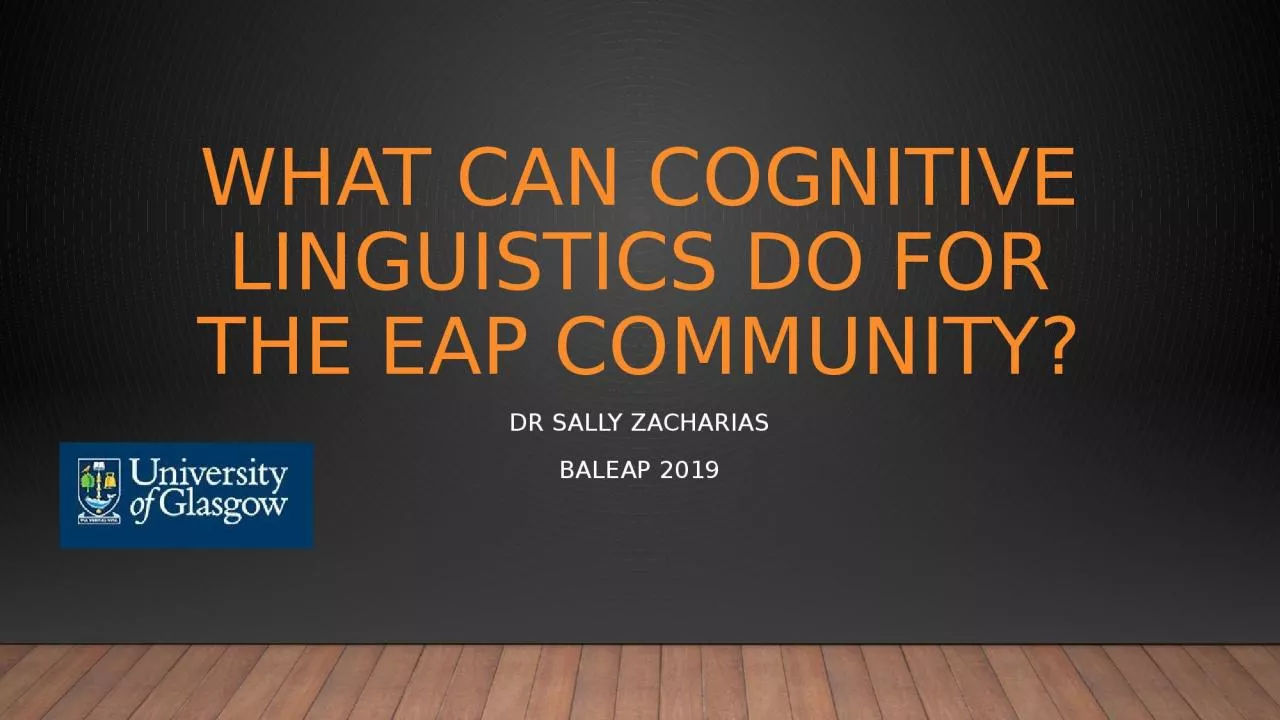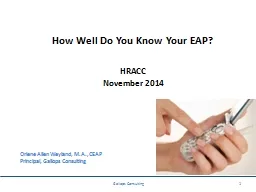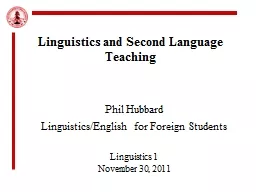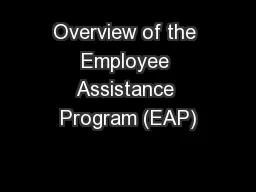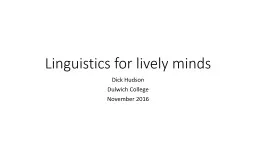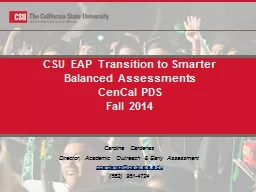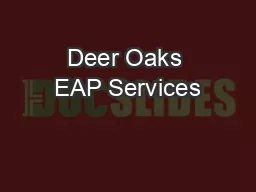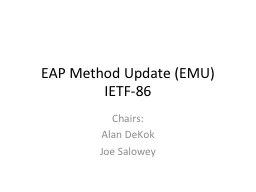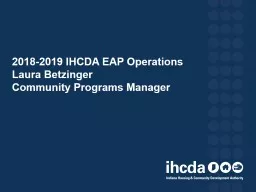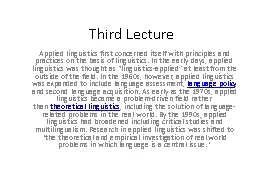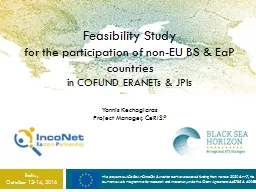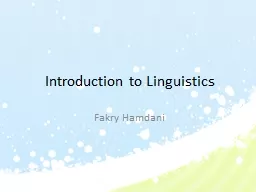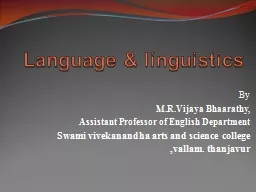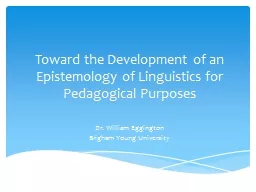PPT-What can cognitive linguistics do for the EAP community?
Author : jade | Published Date : 2024-02-02
Dr Sally Zacharias BALEAP 2019 OutLine What is cognitive linguistics Cognitive linguistics and educational discourse a new approach to thinking about the role of
Presentation Embed Code
Download Presentation
Download Presentation The PPT/PDF document "What can cognitive linguistics do for th..." is the property of its rightful owner. Permission is granted to download and print the materials on this website for personal, non-commercial use only, and to display it on your personal computer provided you do not modify the materials and that you retain all copyright notices contained in the materials. By downloading content from our website, you accept the terms of this agreement.
What can cognitive linguistics do for the EAP community?: Transcript
Download Rules Of Document
"What can cognitive linguistics do for the EAP community?"The content belongs to its owner. You may download and print it for personal use, without modification, and keep all copyright notices. By downloading, you agree to these terms.
Related Documents

